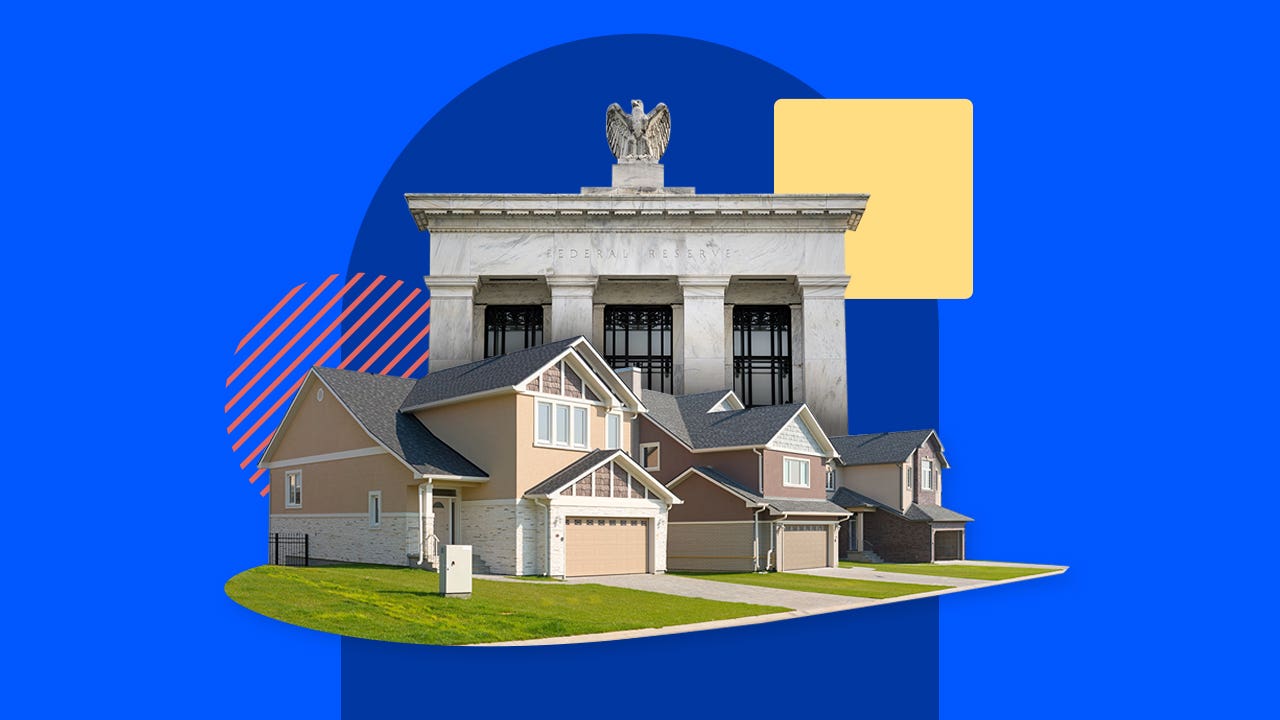How does the Federal Reserve affect mortgages?

The Bankrate promise
At Bankrate we strive to help you make smarter financial decisions. While we adhere to strict , this post may contain references to products from our partners. Here's an explanation for .
The Federal Reserve doesn’t set mortgage rates outright, but its decisions play a role in how rates move. After 11 rate hikes from early 2022 through mid-2023, the Fed announced — for the sixth straight time — a continued pause at its latest meeting on May 1.
“The [Federal Open Markets Committee] did not change the federal funds target at its May meeting, as incoming data regarding the strength of the economy and stubbornly high inflation have resulted in a shift in the timing of a first rate cut,” says Michael Fratantoni, chief economist at the Mortgage Bankers Association. “Several Fed officials in recent weeks have noted that they are in no hurry to change the stance of monetary policy.”
While the Fed had indicated it planned to cut rates in 2024, the first cut keeps getting pushed farther into the future. “We do not expect it will be appropriate to reduce the target range for the federal funds rate until we have gained greater confidence that inflation is moving sustainably toward 2 percent,” Fed Chairman Jerome Powell said Wednesday. “So far this year, the data have not given us that greater confidence.”
Mortgage rates can still fluctuate, of course, even if the Fed keeps its key rate unchanged. So, how do the Fed’s monetary-policy moves affect mortgages? Here’s how it works.
What the Federal Reserve does
The U.S. Federal Reserve sets borrowing costs for shorter-term loans by changing its federal funds rate. This rate dictates how much banks pay each other in interest to borrow funds from their reserves, kept at the Fed on an overnight basis.
In 2022 and 2023, the Fed increased this key interest rate to help calm inflation — hikes that made it more costly for Americans to borrow money or take out credit.
Fixed-rate mortgages — the most popular type of home loan — don’t mirror the federal funds rate, however; they track the 10-year Treasury yield (more on that below). The fed funds rate does affect short-term loans, such as credit card rates and the rates on new home equity loans and lines of credit.
The Fed also buys and sells debt securities in the financial marketplace. This helps support the flow of credit, which tends to have an overarching impact on mortgage rates.
Factors that influence mortgage rates
Fixed-rate mortgages are tied to the 10-year Treasury yield. When that goes up or down, fixed-rate mortgage rates follow suit.
The fixed mortgage rate isn’t exactly the same as the 10-year yield, however; there’s a gap between the two.
Mortgage rates also move because of:
- Inflation: Generally, when inflation picks up, so do fixed mortgage rates.
- Supply and demand: When mortgage lenders have too much business, they raise rates to decrease demand. When business is light, they tend to cut rates to attract more customers.
- The secondary mortgage market, where investors buy mortgage-backed securities: Most lenders bundle the mortgages they underwrite and sell them in the secondary marketplace to investors. When investor demand is high, mortgage rates trend a little lower. When investors aren’t buying, rates might rise to attract them.
How the Fed affects adjustable rate mortgages (ARMs)
While fixed-rate mortgages dominate the U.S. residential financing scene, some Americans prefer adjustable rate mortgages (ARMs), which have variable interest rates that reset annually or semi-annually. The Fed’s moves can affect them more directly.
More specifically, the rates on ARMs are often tied to the Secured Overnight Financing Rate, or SOFR. Because the Fed’s rate decisions serve as a basis for savings instruments, raising or lowering the fed funds rate can push the SOFR up or down. ARM rates, in turn, go up or down as well when the rate resets.
All this means that, if the fed funds rate goes up, your ARM rate will increase as well at the next adjustment.
What to consider if you’re getting a mortgage
Regardless of current Federal Reserve policy, your best bets for the lowest possible mortgage rate are to maintain solid credit, keep your debt low, make as much of a down payment as you can and shop around for loan offers.
When comparing rates, take a look at the APR, not just the interest rate — some lenders might advertise low interest rates, but offset them with high fees. You’ll know your true all-in cost, including these fees, by understanding the APR.
Bottom line on how the Fed affects mortgage rates
The Federal Reserve doesn’t determine fixed mortgage rates, but its policy decisions weave into the broader economic picture that informs your borrowing costs. When setting fixed rates, mortgage lenders take the Fed’s moves into account, as well as factors like the 10-year Treasury yield, inflation and investor appetite. And the Fed’s changes to its benchmark borrowing rates will impact the indexes that influence ARM rates as well.
Related Articles



Wells Fargo scales back mortgage lending: How does that affect borrowers?
